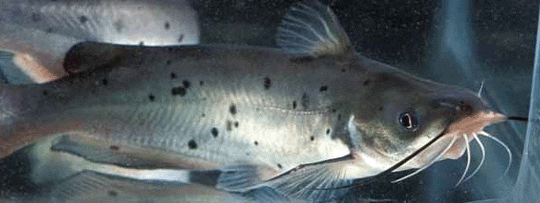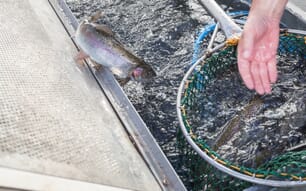Plant extracts called phytobiotics are a group of compounds that have been examined primarily in the domestic livestock industry to replace antibiotic growth promoters. These plant extracts include essential oils (volatile plant compounds), oleoresins (extracts from nonaqueous solvents), herbal products (bark, leaves) and aromatic plants (sage, mint).

Researchers have examined various essential oil components alone and in combination to find possible synergistic effects. Many of these products have been tested in cattle, poultry and swine, and their use in fish is beginning to emerge. For example, phytogenic feed additives have been examined in channel catfish and rainbow trout with results showing improvements in weight gain, feed conversion and immunity to disease.
A 12-week pilot study conducted in tanks at the Thad Cochran National Warmwater Aquaculture Center showed that catfish fed products from essential oils in a commercial feed supplement gained 44% more weight than control fish. In addition, treated fish consumed about 30% more feed. Fillet proximate analysis revealed the treated fish had lower amounts of fat and higher amounts of protein.
The results of the pilot study provided the impetus to test the product in earthen ponds, the typical commercial production environment in the southeastern United States.
Pond Research
At the Delta Western Research Center in Indianola, Mississippi, USA, studies were conducted to investigate the effects of a phytogenic feed additive on the growth performance, processing yield, fillet composition and survival of pondraised channel catfish, Ictalurus punctatus.
Eight treated and seven 0.4-ha control ponds were stocked with 14,820, 126-g catfish/ha. Fish in the control ponds were fed a 32%-crude protein commercial floating diet, while fish in the test ponds were fed the same diet supplemented with Digestarom PEP MGE, a commercial phytogenic product, at 200 g/mt.
In a second study, five treated and five control ponds with areas of 0.4 ha were stocked at a similar density with fish that averaged 68 g in weight. The ponds received the same diets described for the first study. Aeration for each pond was provided by a 3.7-kW aerator. Aerators were turned off in the morning, when dissolved-oxygen concentrations were 4 mg/L or higher. Water quality was maintained in ranges considered adequate for normal catfish performance
.
At the end of the studies, three groups of 100 fish from each pond were counted and weighed to determine average fish weight. Thirty fish whose weight range was 683 to 717 g were selected from each pond for measurements of weight and fillet characteristics.
Results
At the end of the six-month study with the larger fish, there was no significant difference in the amount of feed fed or the amount of weight gained between the control fish and those that received feed supplemented with the phytogenic (Table 1). Feed-conversion ratios, net yields and survival were also similar between the two groups.
Table 1. Mean Production Characteristics for Channel Catfish of 126-G Initial Weight Fed Different Diets in 0.4-Ha Ponds.

Processing results showed that carcass, fillet and nugget yields were similar (Table 2). Fillet proximate analysis revealed that fillet fat was significantly lower (31.3 vs 35.9%, P < 0.01) in treated fish, while fillet protein tended to be a little higher (62.4 vs 61.2%, P < 0.10).
Table 2. Mean Processing Characteristics and Proximate Fillet Compositions of Channel Catfish Fed Different Diets in 0.4-Ha Ponds.

** Mean values for seven control ponds and eight ponds with treated fish, 10 fish/pond. Values with different letters within columns are significantly different (P < 0.01).
In the second study, six months of feeding resulted in similar production characteristics between the two groups (Table 3). Processing and proximate analysis were not conducted in the second study.
Table 3. Mean Production Characteristics for Channel Catfish of 68-G Initial Weight Fed Different Diets in 0.4-Ha Ponds.

Although improvements in weight gain and feed conversion were not seen in the pond studies, fillet fat levels decreased, and fillet protein increased with the addition of phytogenic feed additives to catfish diets. Such improvements in fillet composition are of commercial importance.
Survival was excellent in both studies, and it is not clear what effects these products had on catfish immunity. In order to evaluate the previously reported improvements in fish health, these phytogenic products need to be examined in experimentally infected or stressed catfish.
Perspectives
As the popularity of feed additives increases, more products specific to aquaculture markets will emerge. These and other fish studies appear to show some performance gains. Feed additives such as the one tested in these studies must be cost effective and be easily incorporated into diets made at feed mills.
The cost for adding this phytogenic compound in the diet was less than U.S. $5/mt, and no problems were encountered at the feed mill. The presence of the compound was tested and confirmed, even after extrusion. Finally, the mechanisms of action of these phytogenic compounds are poorly understood, and future research will need to focus on defining how these products work.
July 2013




